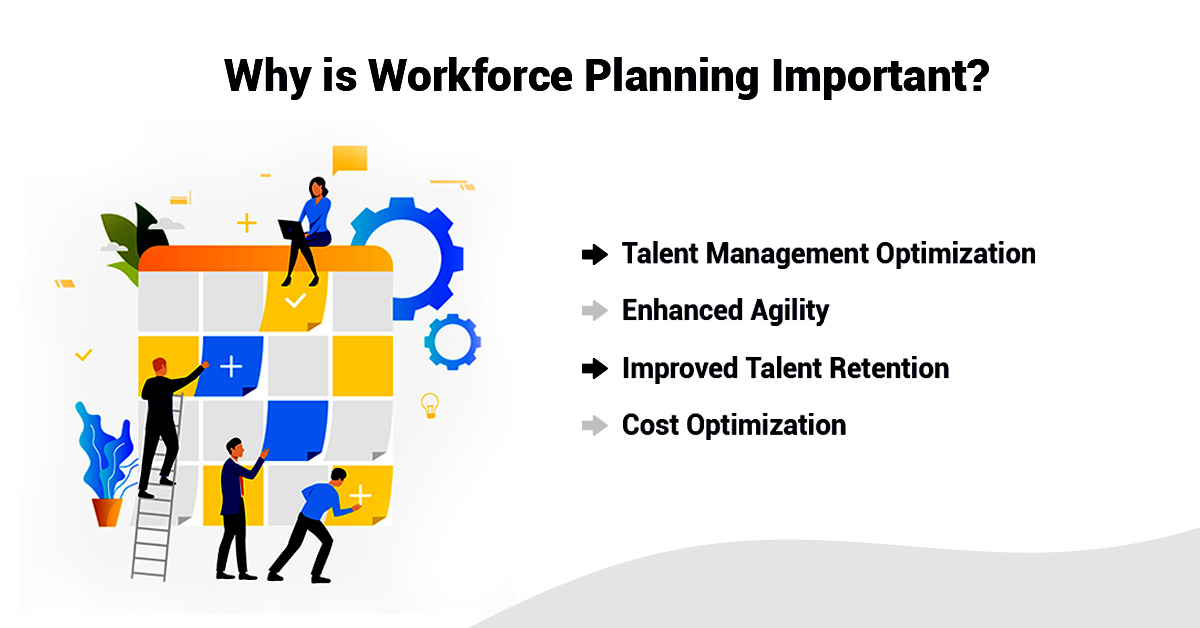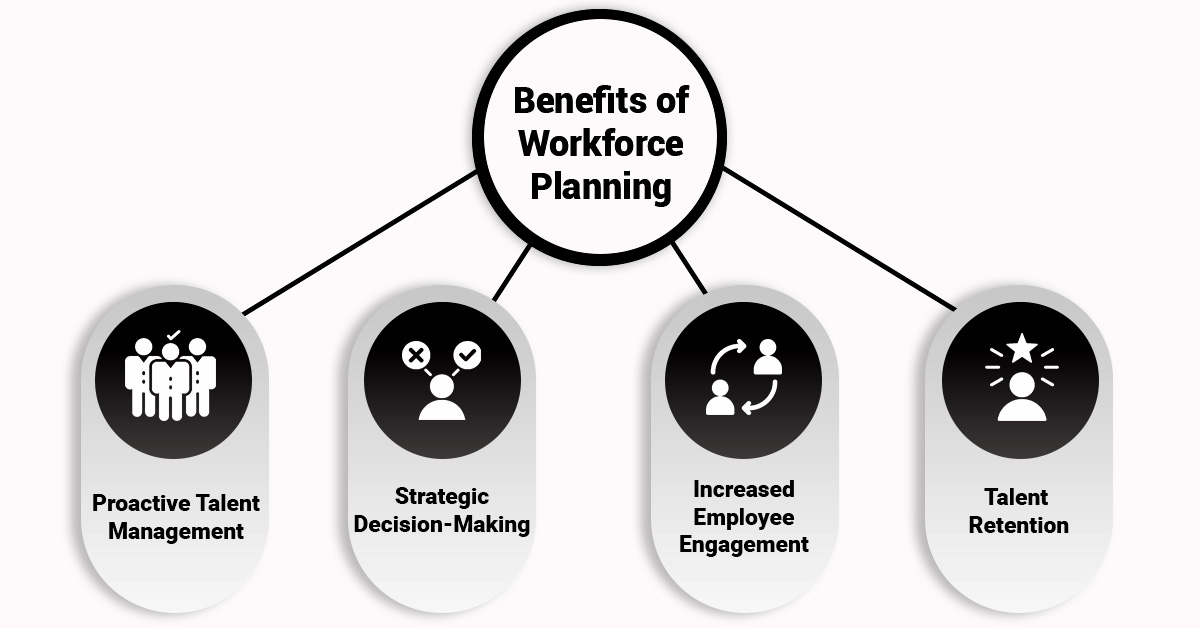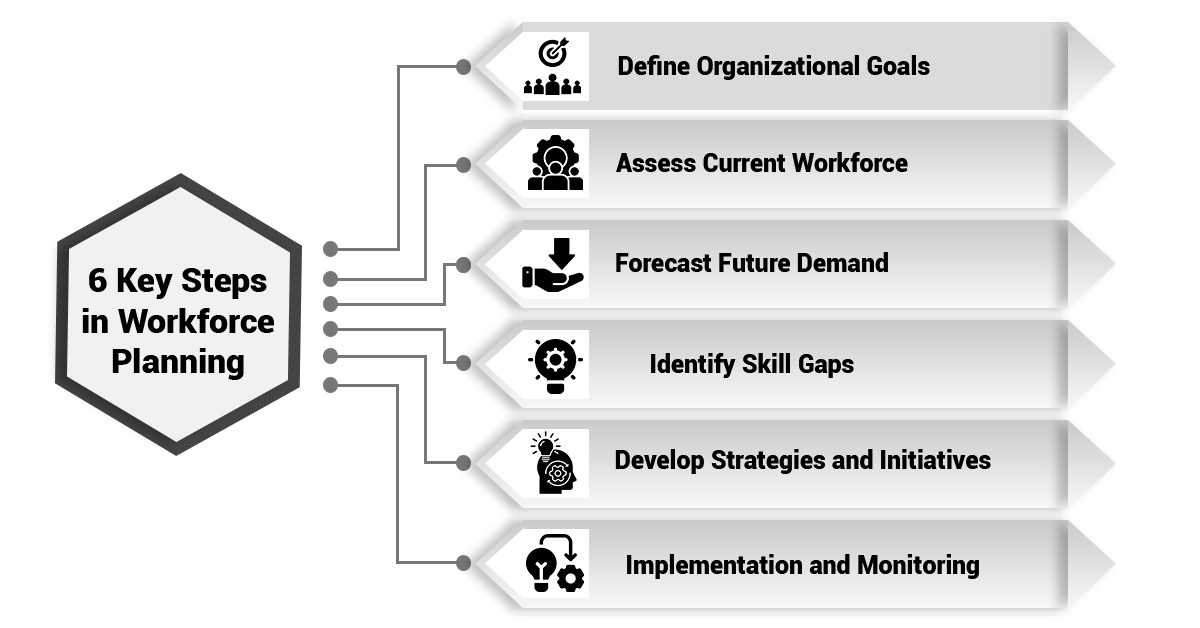
Introduction
In the ever-evolving landscape of talent management, HR professionals understand the critical role of workforce planning in shaping the success of an organization. But what exactly is workforce planning, and why is it important? In this comprehensive guide, we will delve into the intricacies of workforce planning, exploring its definition, impact on HR processes, benefits, and step-by-step approach to creating an effective workforce plan. Let's embark on this journey to unlock the potential of talent management and retention strategies.
What is Workforce Planning?
Workforce planning refers to the strategic process of aligning an organization's current and future talent needs with its overall business objectives. It involves analyzing and forecasting the demand for specific skills and competencies within the workforce, identifying gaps, and developing strategies to address them. It aims to ensure that an organization has the right people in the right positions at the right time.
How Workforce Planning Affects HR Processes?
Workforce planning has a profound impact on various HR processes, including recruitment, training and development, performance management, and succession planning. Here's how it influences each area:
- 01. Recruitment: It guides HR professionals in identifying critical positions and skill requirements, enabling them to attract and hire top talent. By understanding future talent needs, HR can source candidates and build a talent pipeline.
- 02. Training and Development: Effective workforce planning helps HR professionals identify skill gaps and develop training programs to bridge them. It ensures that employees receive the necessary training to meet current and future business demands.
- 03. Performance Management: Workforce planning facilitates the alignment of performance goals with organizational objectives. By identifying key performance indicators and competencies required for future success, HR professionals can design performance management systems that drive employee engagement and development.
- 04. Succession Planning: By identifying critical roles and assessing the potential successors within the organization, workforce planning enables HR professionals to proactively develop future leaders. It ensures a smooth transition in leadership positions and minimizes disruptions to business operations.
Why is Workforce Planning Important?
Workforce planning holds immense importance for organizations and HR professionals. Here are some key reasons why it should be a priority:

- 01. Talent Management Optimization:Effective workforce planning allows organizations to align their talent management strategies with their business goals. It enables HR professionals to identify and develop key skills and competencies required for organizational success.
- 02. Enhanced Agility: By anticipating future talent needs, workforce planning enhances an organization's agility in responding to changes in the market, technology, or industry. It ensures that the workforce is equipped to adapt and thrive in dynamic environments.
- 03. Improved Talent Retention: With the focus not only on attracting top talent but also on retaining them, it enables organizations to identify career development opportunities, address skill gaps, and implement strategies for employee engagement and satisfaction.
- 04. Cost Optimization: By identifying the right talent at the right time, it helps organizations avoid unnecessary recruitment costs, reduce turnover rates, and optimize resource allocation. It ensures that the workforce is efficiently utilized, minimizing both overstaffing and understaffing situations.
Benefits of Workforce Planning
Implementing an effective workforce planning process can bring numerous benefits to organizations. Here are some key advantages:

- 01. Proactive Talent Management: Workforce planning allows organizations to take a proactive approach to talent management. Instead of reacting to talent shortages or skill gaps, HR professionals can strategically address future talent needs.
- 02. Strategic Decision-Making: With accurate data and insights provided by workforce planning, organizations can make informed and strategic decisions regarding talent acquisition, development, and allocation. It enables better resource planning and allocation.
- 03. Increased Employee Engagement: When employees see clear career paths, development opportunities, and a strategic approach to their growth within the organization, their engagement and commitment levels increase. This fosters a positive work environment that promotes employee satisfaction.
- 04. Talent Retention: Identifying potential skill gaps and implementing strategies to bridge them helps in retaining high-potential employees. It ensures that employees have access to the necessary resources and opportunities to grow within the organization.
How to Create a Workforce Plan?
Developing an effective workforce plan requires careful consideration and systematic implementation. Follow these steps to create a comprehensive and actionable plan:

-
Define Organizational Goals: Align your workforce plan with the overall business goals and objectives of the organization. Understand the strategic direction and future needs of the organization to identify the required workforce capabilities.
-
Assess Current Workforce: Conduct a thorough analysis of the current workforce, including skills, competencies, and demographics. Identify areas of strength and areas where skill gaps exist. Evaluate employee performance and potential for future growth.
-
Forecast Future Demand: Utilize data and insights to forecast future talent needs based on business growth projections, industry trends, and anticipated changes in technology or market dynamics. Determine the quantity and quality of talent required.
-
Identify Skill Gaps: Compare the current workforce capabilities with the future demand to identify skill gaps. Pinpoint areas where additional training, recruitment, or talent development is necessary to meet future needs.
-
Develop Strategies and Initiatives: Design strategies and initiatives to address skill gaps and talent requirements. This may include recruitment plans, training and development programs, employee engagement strategies, and succession planning initiatives.
- Implementation and Monitoring: Implement the workforce plan in a phased manner, closely monitoring its progress and making adjustments as needed. Regularly review and evaluate the effectiveness of the strategies and initiatives to ensure alignment with business objectives.
Workforce Planning Tools
Various tools and technologies are available to support the workforce planning process. These tools help HR professionals gather, analyze, and visualize data, enabling them to make informed decisions and develop robust workforce plans. Some popular workforce planning tools include:
- Workforce Planning Software Dedicated software solutions provide comprehensive workforce analytics, scenario modeling, and forecasting capabilities. These tools streamline the data analysis process and facilitate strategic decision-making.
- HR Information Systems (HRIS) HRIS platforms offer features that support data collection, reporting, and analysis. They provide insights into workforce demographics, performance, and skills, enabling HR professionals to make data-driven decisions.
- Data Visualization Tools Data visualization tools allow HR professionals to transform complex data into easily understandable charts, graphs, and dashboards. These visual representations help in identifying trends, patterns, and areas of focus.
Conclusion
Workforce planning is a vital process for HR professionals seeking to align talent management strategies with organizational goals. By analyzing current and future talent needs, addressing skill gaps, and implementing effective strategies, organizations can optimize talent management and retention. Through proactive planning, HR professionals can drive organizational success, foster employee engagement, and create a thriving work environment. Embrace the power of this effectively to unlock the potential of your organization's talent and secure a competitive advantage in today's dynamic business landscape.





